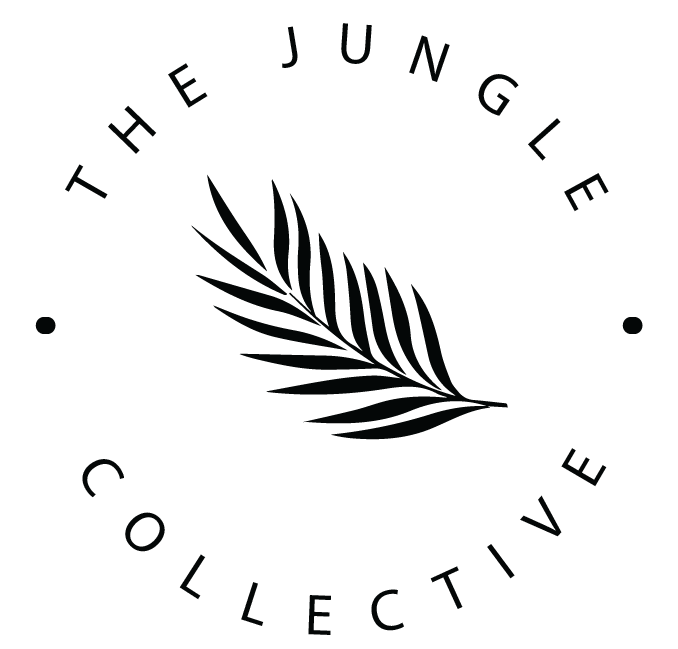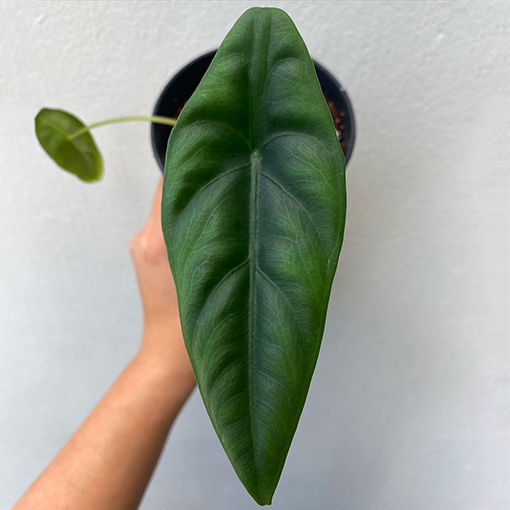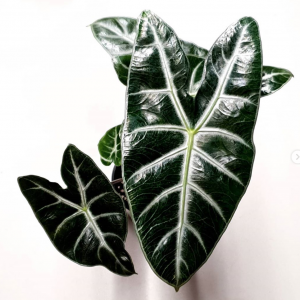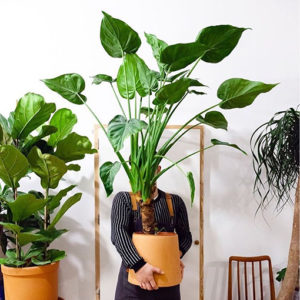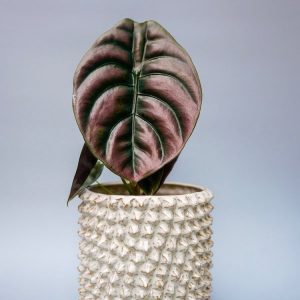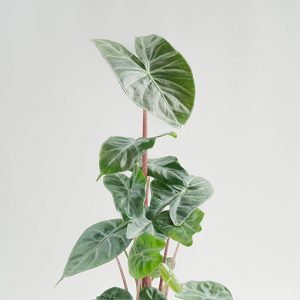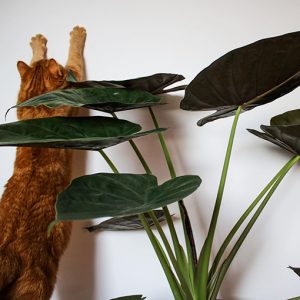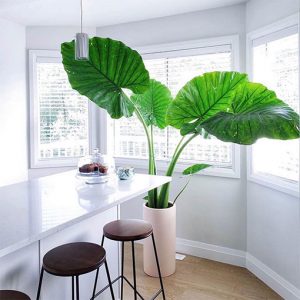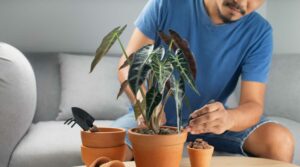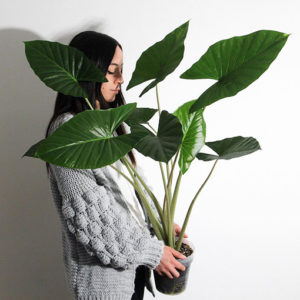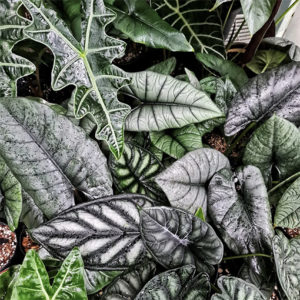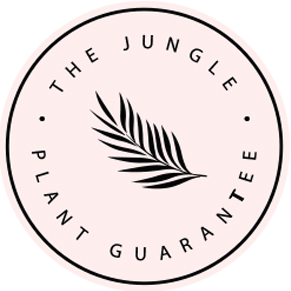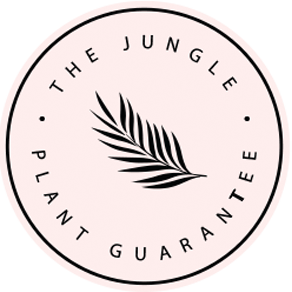
Modesty may not be this latest rare bear’s greatest attribute, it’s name means Attractive in Latin, but without a doubt the Alocasia Venusta is helping to keep the Alocasias on top by carrying the baton! The latest and Gre..attractivest 😍🌿😎 📸: myplant.life
Alocasia venusta Toxicity
Like other aroids, Alocasia venusta contains calcium oxalate crystals and is toxic to pets and humans.
Want a Alocasia venusta?
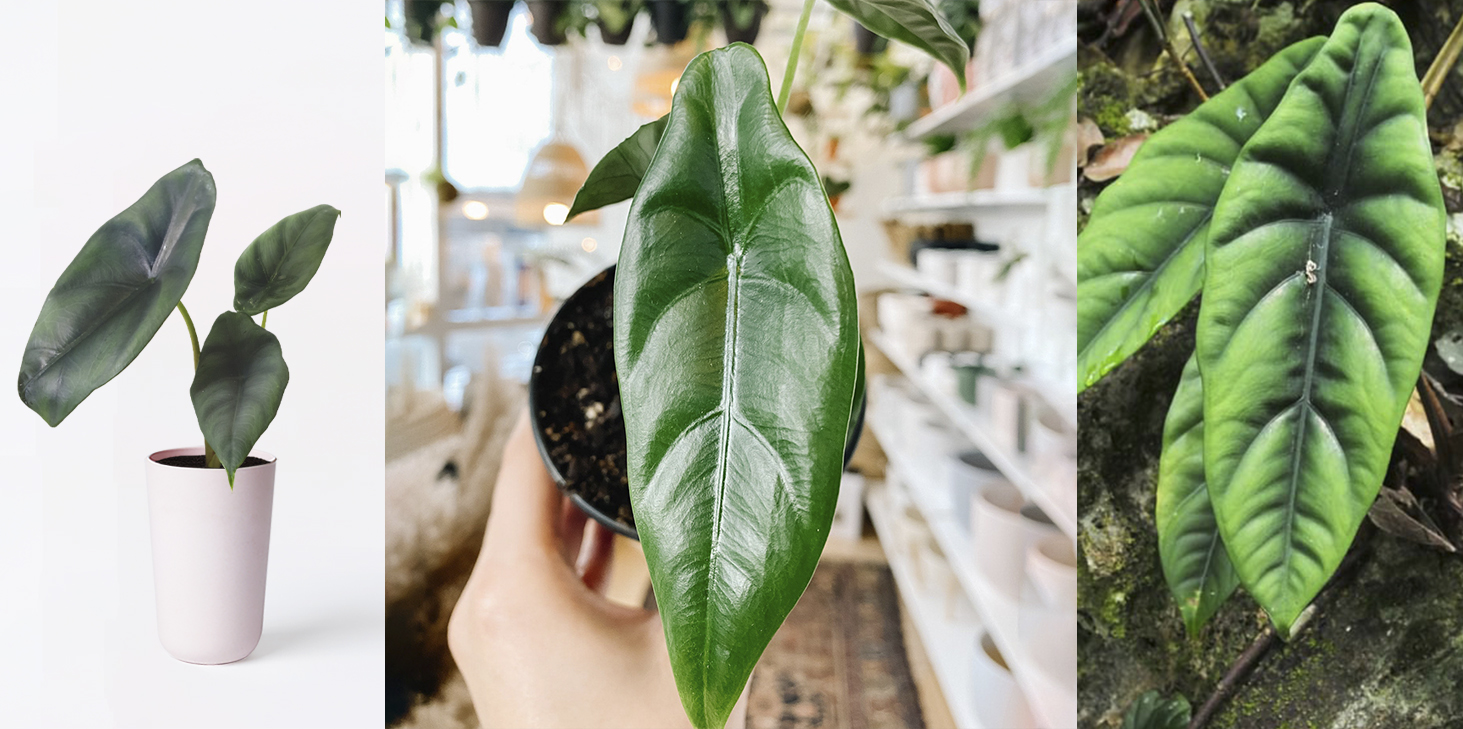
Where to buy an Alocasia venusta in Australia?
Why we’re glad you asked as we do our best to have a steady supply of Alocasia Venusta in stock. Click here to See if we have any Alocasia venusta in Stock!
This is an unusual and quite rare aroid in the group known as Jewel Alocasias because of its small size, growing slowing to a maximum of about 40cm in height (compared to the elephant ear species).
Alocasia venusta has slender, slightly stiff, and boat-shaped leaves. The upper leaf surface is dark green with darker green near the main leaf veins and a paler green beneath. Its specific name, venusta, means beautiful.
Alocasia venusta Natural Environment
It comes from a small region of Sarawak (Borneo Island), where it grows as a lithophyte on limestone in the primary rainforest. This growth habit means that its roots are regularly wet and then dried.
It gets its nutrients from rainwater and decaying plant material around it rather than from soil. It receives scattered light through the canopy and high humidity at all times.
Alocasia venusta Watering, Fertiliser, Lighting and Humidity
These features of its natural habitat tell us that the mix must be very well aerated and preferably slightly alkaline. A mix with orchid bark, perlite and sand mixed into the quality potting mix and a dash of dolomite would do nicely. Alocasia venusta must not have continuously wet roots so the mix must be allowed to dry down before watering again. Fertilising should be regular but dilute. It does best in bright indirect light and high humidity (>50%) and good air movement.
We recommend using our Plant Food available here.
Alocasia Venusta Common Pests
The most common pests of alocasias are spider mites, mealybugs, and scale insects. To avoid rots and leaf spots, do not overwater the plant and maintain good air movement.
For more information on how to manage common plant pests, head to our blog here.
Alocasia venusta Toxicity
Like other aroids, Alocasia venusta contains calcium oxalate crystals and is toxic to pets and humans.
Want a Alocasia venusta?



